What Is Life Really Like for a Dog Bred to Race in the Iditarod?
“Surplus” killings; rotten, moldy meat for food; being forced to compete on bloody paws until some inhale their own vomit and die; a body count of more than 150. Make no mistake—for dogs bred and used for the Iditarod, life both on and off its trail of suffering is hell on Earth.
Learn what each stage of existence is really like for dogs used for the Iditarod:
Puppies Deprived of Love, Nurturing, and Safety
Thousands of puppies are born each year for the dog-sledding industry—but only a few hundred will actually compete in the Iditarod. Breeders of dogs used in sledding have freely admitted that “surplus” dogs are killed. They may be killed if they aren’t fast or fit enough for competition or if they don’t meet certain aesthetic standards—for example, if they have white paw pads.
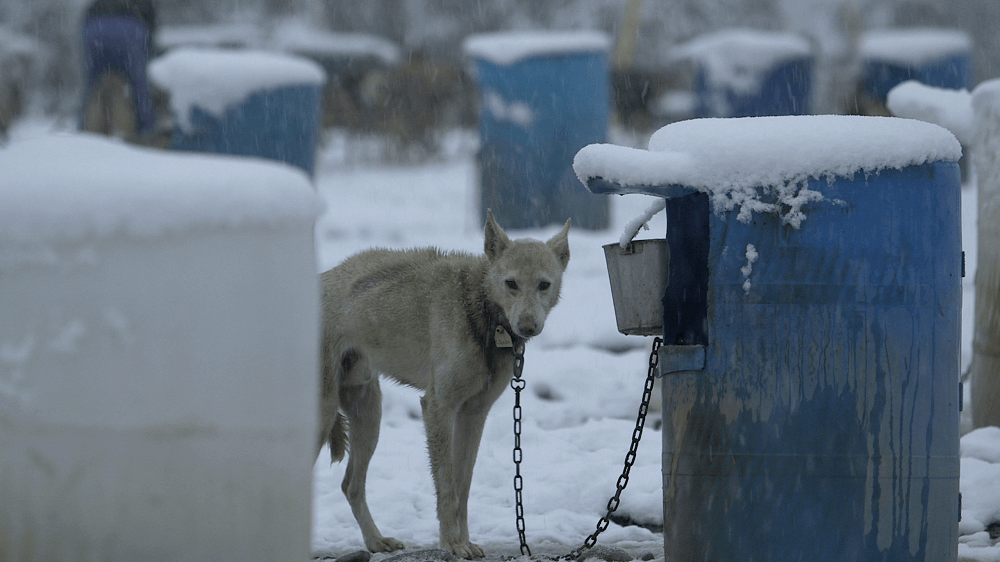
At a kennel reportedly owned by Dallas Seavey, the now five-time Iditarod winner who was also implicated in a dog-doping scandal, a whistleblower reported finding a litter of seven newborn puppies who had died within the past month without any veterinary intervention.

Those who aren’t killed as puppies are chained for most of their lives, starting as early as 6 months old, even in the bitter cold and biting wind. Many dogs at these breeding compounds have frozen to death or died of complications from eating rocks—likely because they were intensely frustrated from spending years on a chain.
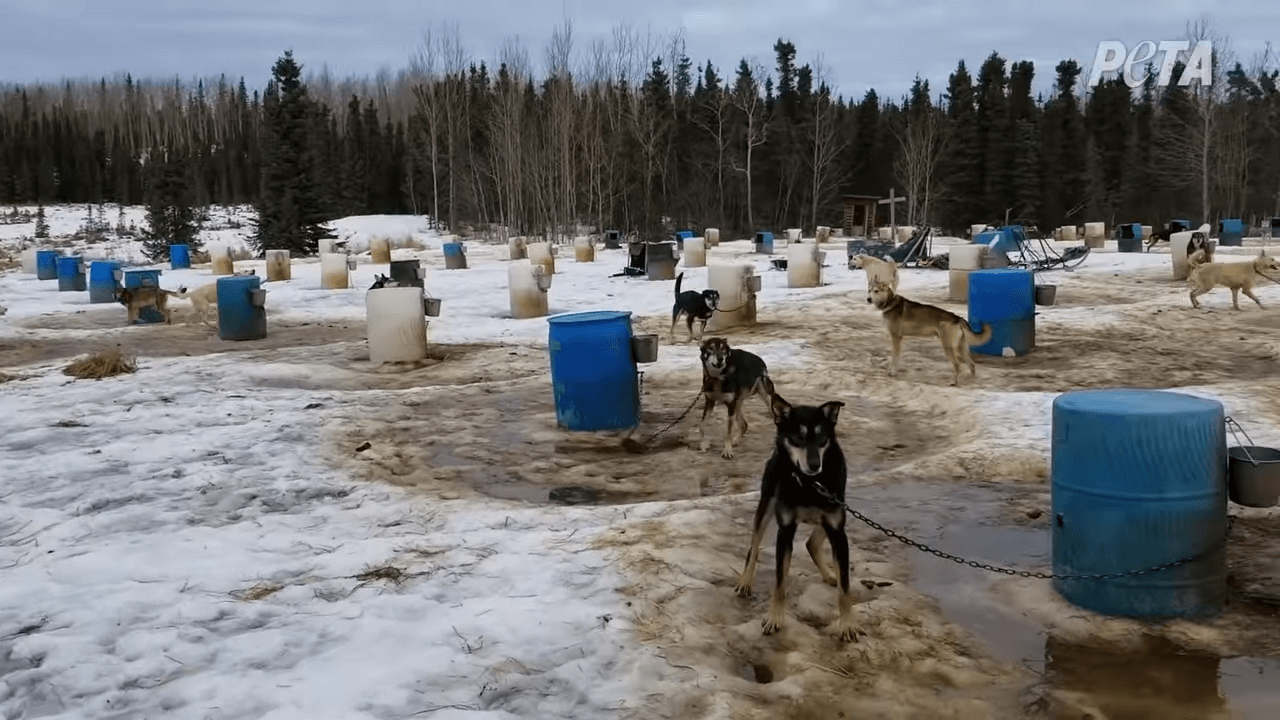
Some die of starvation, while others are fed rotten or moldy meat.
Many who survive spend their lives in pain, as injuries and illnesses often go untreated. A PETA eyewitness exposé revealed that at a kennel operated by former Iditarod champion John Baker and by Katherine Keith, the two refused to take Birch, a puppy with an extremely painful spinal cord injury, to a veterinarian.
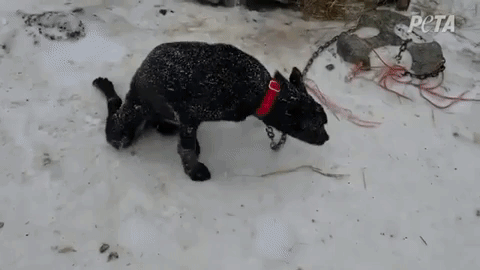
‘Training’ Is as Barbaric as the Race Itself
Aside from the race itself, “training” may be the only time that dogs bred for sledding get to move farther than the limit of the short rope or chain that restrains them. Instead of living indoors as a loved and respected member of the family—as all dogs should—they are forced by mushers to pull heavy sleds for more than 50 miles at a time. Mushers deprive them of water and often strike them in the face or kick them in the testicles or anus. Mushers terrorize dogs into continuing on—even with bloody paws. They force dogs to run.
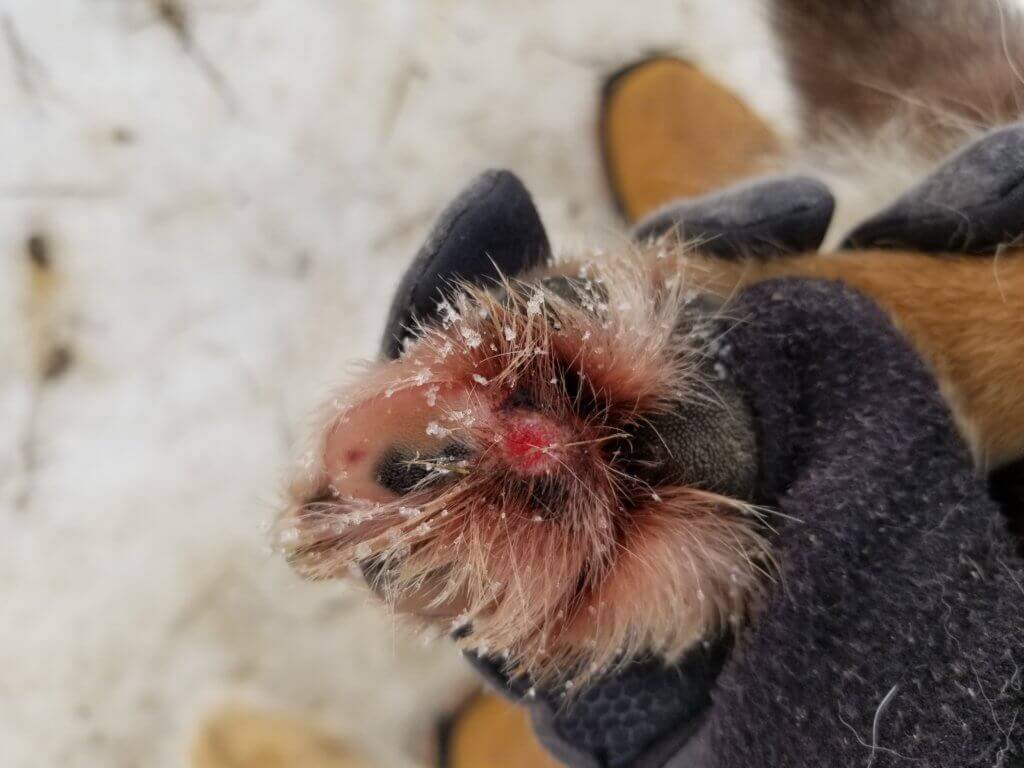
Mushers and kennel operators have even killed dogs who weren’t fit or fast enough, because to mushers, it’s “better to have a dead dog” than a “dog [who] slows down the team.”
For Dogs, the Iditarod Is Torture—So Is Life Afterward
More than 150 dogs have died during the Iditarod since it began, and those are just the reported deaths. The leading cause of death for dogs forced to race is aspiration pneumonia—caused by inhaling their own vomit. Others who have been killed have suffocated, suffered heatstroke or hypothermia, or been struck by vehicles.
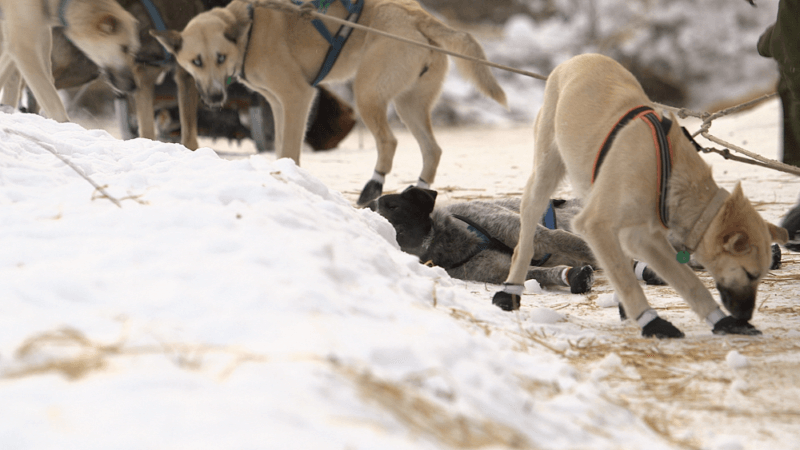
Because dogs are forced to pull sleds up to 100 miles a day in some of the worst weather conditions on the planet, including 40 mph winds, whiteouts, and temperatures as low as minus 50 degrees, those who survive are often left with debilitating and horrific injuries, including persistent lung damage. While at three-time Iditarod champion Mitch Seavey’s kennel, PETA’s eyewitness observed one dog, Captain, who had open, infected wounds on his neck that smelled like rotting flesh. A worker—who wasn’t a veterinarian—squeezed pus and tore tissue out of the wounds barehanded, then sprayed them with a fungicide. Injuries like these continue to go untreated in the off-season.
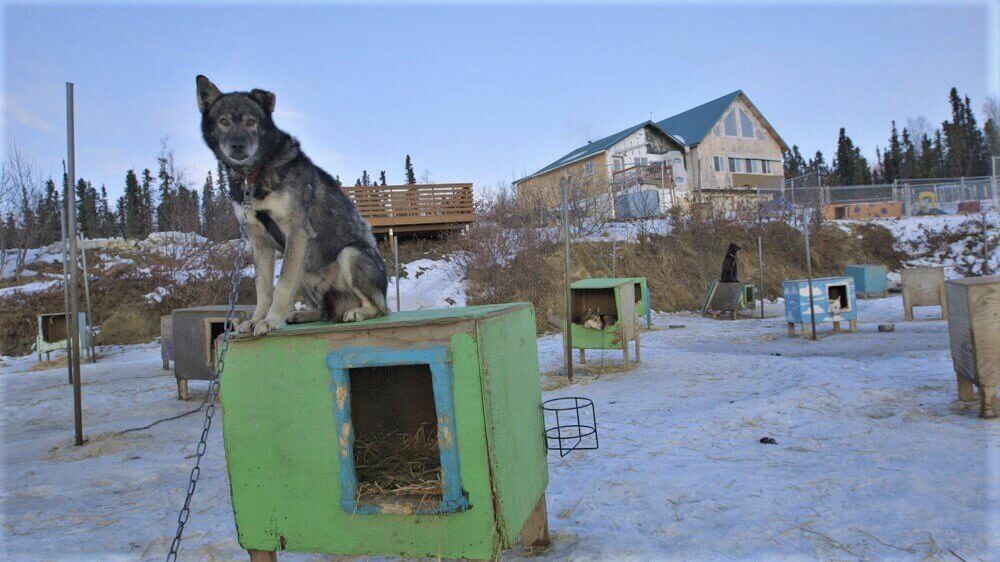
For these dogs, there’s no retirement plan. Even those who “win” and survive the race are chained back up and forced to exist in the very same conditions they’ve known their entire lives. Take Snickers …
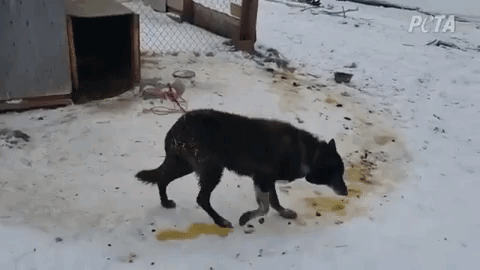
… who was one of Baker’s lead dogs in 2011, when he won the Iditarod. When Snickers was 11 years old, PETA’s eyewitness found her limping and suffering from chronic, painful arthritis. Like with Birch, Baker admitted that he needed to “put [Snickers] out of her misery”—he said that he planned to shoot her but had not yet done so because “I just don’t have a good place to bury her.”
How Can You Help Dogs in the Iditarod?
PETA has been taking down the Iditarod sponsor by sponsor. Nearly all major companies—including Millennium Hotels and Resorts, ExxonMobil, Chrysler, Alaska Airlines, Coca-Cola, Jack Daniel’s, State Farm, and Wells Fargo—have listened to PETA and dropped their sponsorships. Tell Liberty Media/GCI to do the same:

